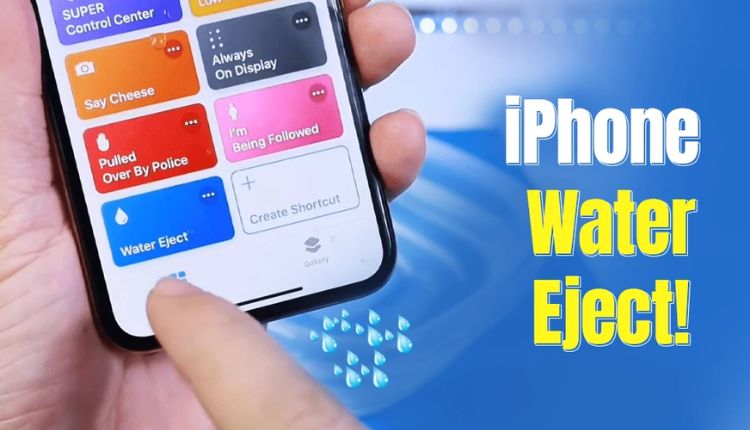While there are many current how to remove water from iPhone, they’re not completely water-resistant. This way, water damage can still occur in case your smartphone is exposed to liquid for too long or submerged past its resistance limits. Acting fast and correctly is crucial to saving your tool from critical damage. Understanding the right techniques can make all the difference between a completely functioning iPhone and a steeply priced repair.
Understanding the Risks of How to Remove Water from iPhone
When water enters, how to remove water from iPhone, it could cause inner corrosion, harm to the good judgment board, and quick circuits within the delicate electronics. Even if the cellphone seems to be operating first-class right now after publicity, hidden moisture can cause long-term troubles.
One of the riskiest things is continuing to use the tool without drying it properly, as this will cause greater internal damage over time. Recognizing the early symptoms of water damage, which include distorted audio, malfunctioning buttons, or an unresponsive display screen, permits you to act before the problem becomes irreversible.
First Steps to Take Immediately After Water Exposure
If how to remove water from iPhone comes into contact with water, the first thing you must do is turn it off immediately. Leaving it on increases the risk of short circuits. Remove any case, unplug add-ons, and take out the SIM card to permit airflow.
Avoid pressing buttons unnecessarily, as this can push water further in. Gently wipe the exterior with a smooth, lint-free material, being careful no longer to spread water into open ports. If you can, position the smartphone in a barely tilted function so gravity can assist in drawing water out from the charging port or speaker openings.
Methods to How to Remove Water from iPhone
There are numerous powerful techniques to get water out of how to remove water from iPhone. One famous approach is the use of a dry, moisture-absorbing environment. Silica gel packets, which might be generally found in packaging, can assist in drawing out moisture from the device.
Placing your telephone in a sealed field with several silica gel packs for a minimum of 24 to 48 hours can considerably enhance the drying technique. While a few human beings recommend the use of raw rice, silica gel is a good deal more powerful and does not leave behind dust particles that would damage inner additives.
Using Apple’s Built-in Water Ejection Feature
How to remove water from iPhone models has features that assist in disposing of water from the speakers. By the usage of particular sound frequencies, the cellphone can push out trapped water. There are apps and online gear that generate tones designed to expel water from the speaker grill.
This approach works satisfactorily whilst mixed with other drying techniques because it typically facilitates clearing the speaker area rather than the whole device. Always ensure your iPhone is powered off and partially dried before attempting sound-based water elimination to keep away from electrical damage.
Avoiding Common Mistakes When Drying an iPhone
Many human beings make errors when looking to dry a moist iPhone; that can cause similar damage. One of the most important errors is using a hair dryer or a different direct heat source, as excessive heat can warp internal components or damage the display. Similarly, setting the cellphone in direct sunlight can cause overheating.
Another mistake is shaking the device vigorously, which could cause water to enter deeper components. Also, do not insert cotton swabs or tissues into ports, as fibers can get caught and attract moisture. Patience and mild drying methods are constantly more secure.
Professional Repair and How to Remove Water from iPhone
If domestic techniques no longer restore how to remove water from iPhone or you’re experiencing lingering issues, professional repair is often the best option. Apple and licensed repair centres can open the tool, cast off moisture, and update any damaged elements. While this will be steeply priced, it guarantees that the painting is finished safely and efficiently.
Water damage isn’t commonly included beneath fashionable warranties; however, AppleCare with theft and loss protection may additionally provide reduced repair costs in certain cases. Always back up your records in case your tool powers on earlier than taking it in for service.
Preventing Future Water Damage
The best way to address water harm is to prevent it from occurring in the first place. Using a high-quality waterproof case provides an extra layer of safety, especially if you are around water frequently. Be mindful of your surroundings whilst using your cellphone close to swimming pools, toilets, or in the course of rain.
Avoid how to remove water from iPhone, as moisture can damage the charging port and lead to electrical dangers. For safety, don’t forget to make an investment in water-resistant pouches while touring or participating in water activities.
How to Tell if Your iPhone is Fully Dry
Before turning how to remove water from iPhone, you need to be confident it is absolutely dry. Check the water damage indicator inside the SIM tray; if it has a modified color, your cellphone has been exposed to liquid. Even if the indicator shows no sign, lingering water can nevertheless cause harm.
Wait at least 24 to 48 hours after drying before powering the tool. If the smartphone feels strangely hot or the display screen indicates unusual patterns while powered on, flip it off right now and seek expert help.
Conclusion
Water harm may be alarming; however, knowing the way to dispose of water and how to remove water from iPhone the right way can protect your device from permanent harm. Acting fast, keeping off commonplace errors, and using effective drying techniques are key steps to success. While domestic remedies can frequently restore capability, expert repair may still be necessary if the harm is intense. With the right prevention strategies and careful management, you could significantly reduce the chance of water-associated injuries and keep your iPhone working smoothly for years.
